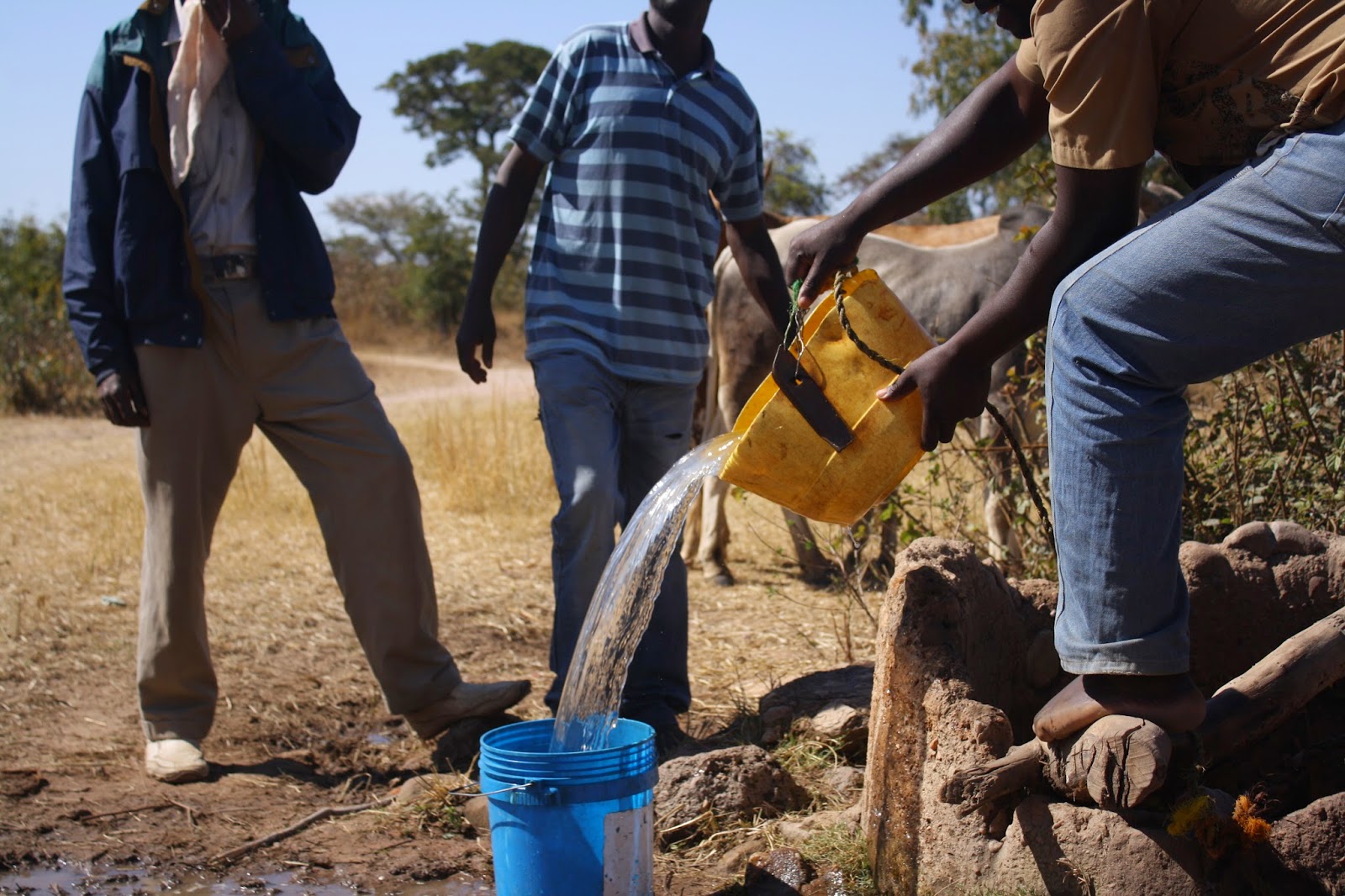As
my friend Peter Mukuma used to say, “Water is life, Jordan. There’s nothing else so important.”
Peter
was right in many of his beliefs, but especially in this one. Water is the limiting factor here, and Peter
as a rural farmer knew the hardships that a lack of water brings. You don’t know how much you use water until
you have to carry it yourself from a distant well, and for some that well can
be in excess of a mile and a half from their home.
 |
| Peter Mukuma and his family. The man was wise. Water is life. His wife Betty would have to walk about 30 minutes round trip to fetch water. |
Receiving less than 750 mms (roughly 30 inches), but as low as 500 mms (20 inches) per year of rain means that the relationship between Southern Province (where I live) and climatic droughts is that of old friends: well acquainted.
An
aspect of the project that I work on in Southern Province deals with
disasters and local hazards within a community, and without fail droughts and
their affects are brought up constantly as a major hazard and barer of
misfortune throughout the region. When a
drought sets in crops wither and fail, animals bellow in response to their
thirst, and life becomes that much harder as semi-arid living morphs into an
arid existence.
But
what if you didn’t have enough water to drink… during the year – not just during
or because of the dry times? What if
your water came solely from a hole in the ground, and that hole in the ground
was not nearby? That’s an issue that’s
been brought up frequently as of late during meetings in the rural communities
– the wells are unaffected by the dry spells but they’re so far away that they
might as well be causalities of a changing climate. These are issues faced not only in
Southern Province, but also throughout Zambia as a whole.
The United Nations cites these two key points as issues in regards to Zambia’s drinking water.
•4.8
million people (36 percent of the total population) are without access to clean
water.
•More than 25 percent of basic schools do not have access to safe water supply.
•More than 25 percent of basic schools do not have access to safe water supply.
Typically
hand-pumped boreholes remedy this issue of water access. Although boreholes dot Zambia’s rural and
peri-urban landscapes like freckles on the shoulders, there aren’t enough of
them. The problem is remedied by walking
and then carrying the water.
This
responsibility largely falls onto the shoulders of women to fetch water, as it
is part of their daily duties within the rural Zambian family’s makeup. Carrying the water on their heads or in their
hands (often with a baby strapped to their back) women can spend up to an hour
walking in order to fetch water, and this may happen two or three times a time
in the most extreme instances.
 |
| These three are carrying some of the day's needed water. |
It
would be ideal if women and their families had boreholes, or at least a basic
well, near to their homes – somewhere that would serve as a central
point for the entire village – but that sadly isn’t a reality. It’s been pointed out to me that this doesn’t
happen for three reasons.
First,
boreholes cost money to construct and with so many other pressing health issues at hand (malaria,
HIV/AIDS, maternal/child health, etc.) there isn’t enough money to go around. A price tag of somewhere around $6,000 per
set-up isn’t petty cash.
 |
| Animals, people, gardens, and chores. All are in need of water, but water simply isn't available in some areas. |
Second,
boreholes are highly political. Want to
win some easy votes? Build a borehole,
even if it’s near a stream or existing well… people eat that up and will
cast their vote for you. It seems like a
tremendous misuse of resources, but politicians are the same everywhere.
Third,
there are thousands upon thousands of villages in Zambia and just this number
makes it nearly impossible to quench the collective rural thirst. To support the construction of just ten
boreholes it would cost about $60,000.
Water
truly is life as Peter told me. With
water a family can have a garden nearby, women will have extra time for other activities,
and sanitation can be improved through hand washing because this won’t require an
extra effort of getting water.
 |
| These children are using a bicycle to load up on water. Each container seen here holds about five gallons of water. Children often help to get water to ease some of their mother's burdens. |
Every
issue, every hardship is connected somehow – one hardship here affects a person
in so many ways, but in a dry - and increasingly drying world - water’s
inaccessibility is continually being felt more and more by those that already have so much hardship in their lives.













